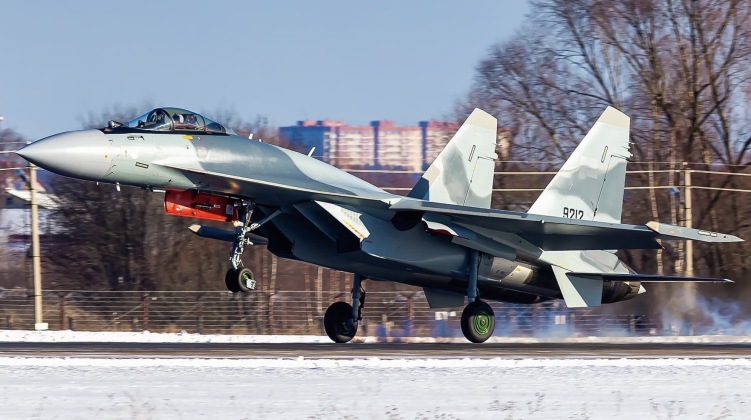News
Russian Air Force Receives New Su-35 Batch – Three Further Batches in Production After Iranian Orders Completed

The Russian Air Force has received a new batch of Su-35 ‘4++ generation’ fighter aircraft from the Komsomolsk on Amur aircraft plant to fulfil with orders placed with the state owned United Aircraft Corporation (UAC) by the Defence Ministry. Each fighter underwent flight tests in various modes of operation with technical services before being delivered to an undisclosed airbase. UAC CEO Yuri Slyusar reported on June 23 regarding the delivery: “UAC enterprises fulfilling the state defence order, and the Komsomolsk plant among them, received a significant amount of funds under the program of technical re-equipment and production modernisation thanks to state support. New facilities and production units have been put into operation. This allows us to increase serial production and increase production volumes. We will continue to fulfil our obligations under signed contracts.” Slyusar notably added regarding future deliveries that “Su-35s of the next batches are already in production. In addition, deliveries of Su-57 fifth-generation fighters to the Russian Air Force will increase this year.” The Su-35 is currently the most capable fighter fielded by Russia at squadron level strength, although the first full squadron of more sophisticated Su-57 fifth generation fighters, also built at Komsomolsk on Amur, is expected to be formed within the next 12 months with 10 airframes already delivered.
The Su-35 began production in 2009, with numbers built estimated at around 170, of which around 48 were produced for export half for China and half for Egypt. Threats by the United States to impose economic sanctions on Cairo, however, in line with a long-standing policy of denying the African state access to medium or high end aerial warfare assets, led Egypt to suspend a 2018 deal to acquire the fighters. In 2022 Iran reportedly placed an order for Su-35s which will be delivered from the stored units built for Egyptian requirements. Production for the Russian Air Force indicates that all production to meet outstanding Iranian orders has been met. The Su-35 was initially planned to have a production run of 200 airframes, approximately half of which were expected to be exported, with much higher export volumes remaining a possibility depending largely on the scale of Iranian followup orders. Competition from the much less costly Su-30SM fighter, which has highly comparable capabilities for most kinds of operations, has been a leading factor undercutting exports, as have American threats to impose sanctions which have prevented multiple states such as Indonesia from following through with planned orders.

The Su-35 is reported to have seen more air to air combat than any other 21st century fighter class, having been deployed extensively for combat in Ukraine and gained multiple killed against a widerange of Ukrainian aircraft, from Mi-8 helicopters to Su-27 and MiG-29 fighters. The class began to be used for aggressor training in September 2022 in an apparent attempt to share experience gained by pilots in Ukraine more widely within the air force. The most recent prior batch was received in September 2022. The Su-35 is prized for a range of capabilities, including a much greater endurance and level of manoeuvrability than Western fighter classes, its use of three phased array radars all optimised to detect stealth targets, and its advanced Khibny electronic warfare suite. It has broken records for the ranges of its air to air kills, engaging aircraft over Ukraine at close to 200km away with its R-37M air to air missiles – which have unrivalled March 6 speeds and 400km engagement ranges. Su-35s notably saw expanded deployments to Eastern Europe in the weeks preceding the initiation of operations in Ukraine, with units from the Far East, near the Komsomolsk on Amur plant, redeployed to bases in Belarus. The cancellation of the MiG 1.42 fifth generation fighter program that began in the Soviet Union, and delays of over a decade to the Su-57 program, have led the Russian Air Force to rely very heavily on the Su-35 for high end air superiority capabilities.












